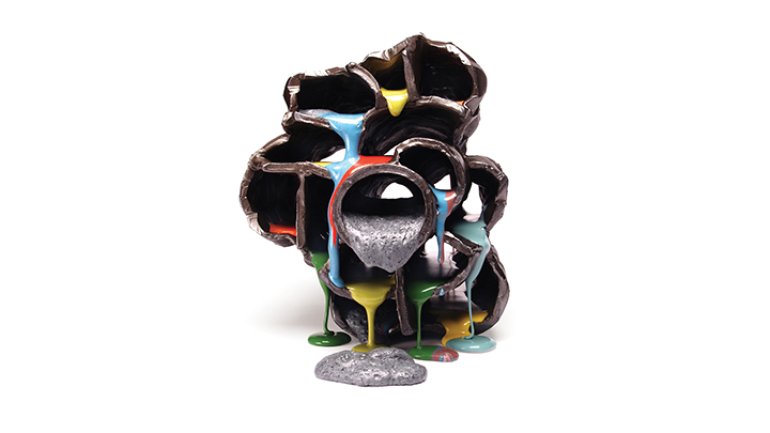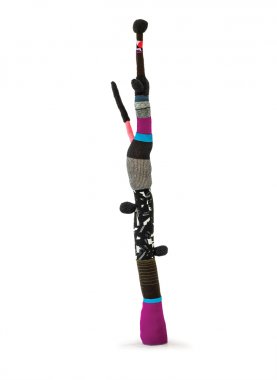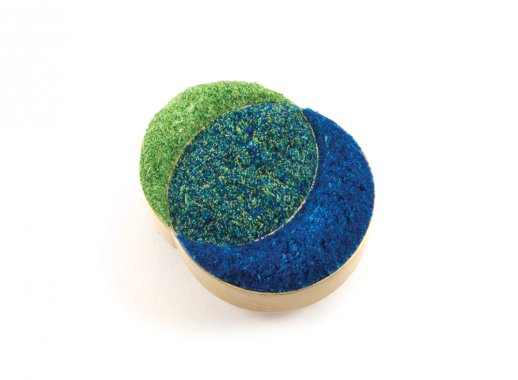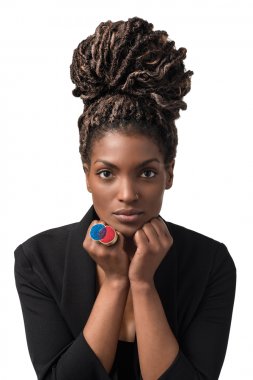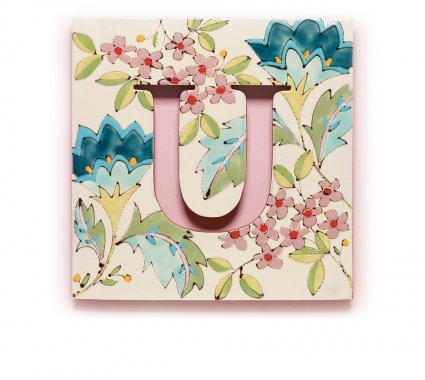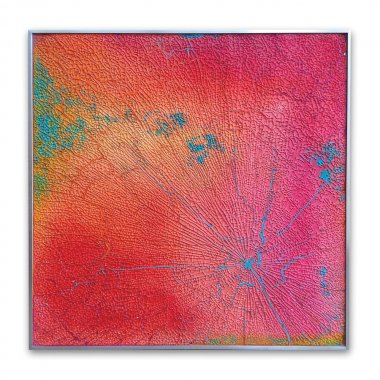Rainbow People
Rainbow People
French-born Elodie Blanchard is a Brooklyn textile designer who uses her fabric scraps to make tree-like sculptures such as Odile (2017). Her design work is methodical; she gathers thousands of woven samples and assembles color boards to decide how to combine hues in a given textile. Constructing her Trees series is much freer: “I put the colors together as I go, change, add,” she says. “It’s an organic process.”
Cassandria Blackmore paints on glass, then shatters, reverses, and reassembles the painting. The California artist is inspired by the contrasting emotional register of different hues and loves to see what happens “when they collide within a painting.” The pinks, reds, oranges, and blues in Iliovasilema II (2013) are a case in point. “Colors can be charged with tension, or color can pacify,” she points out. The colors here “vibrate off of each other, creating a surface energy.” It’s just what she’s going for.
Dylan Beck made Ventricle Gunge (2018) while he was researching undersea mud volcanoes, intrigued by images colorized to show water depth and temperature. The Portland, Oregon, artist used a gray ceramic form to represent rock that moves slowly, incrementally, over centuries; glass in showier colors stands in for the oozing lava.
Color theory is a primary source of inspiration for Amarette Gregor. “Pretty much all of my work is an excuse to play with color in different forms,” the Portland, Oregon, metalsmith says. These days, her vehicle for color is thread. All of the colors she uses, even the seemingly pure hues at the edges of the Blue Green Brooch, are blended from at least five or six spools of thread in distinct colors.
For years, Minneapolis ceramist Ursula Hargens assumed she had arrived at her signature palette intuitively, over time. The truth is more complicated. The real guiding force, she discovered, was her kind of color synesthesia, a neurological condition that attaches colors to letters and numbers. For her Grapheme series (2013), Hargens used the colors she associates with the letters of her first name. In her case, she explains, “symbols of written language translate into a language of color.”


